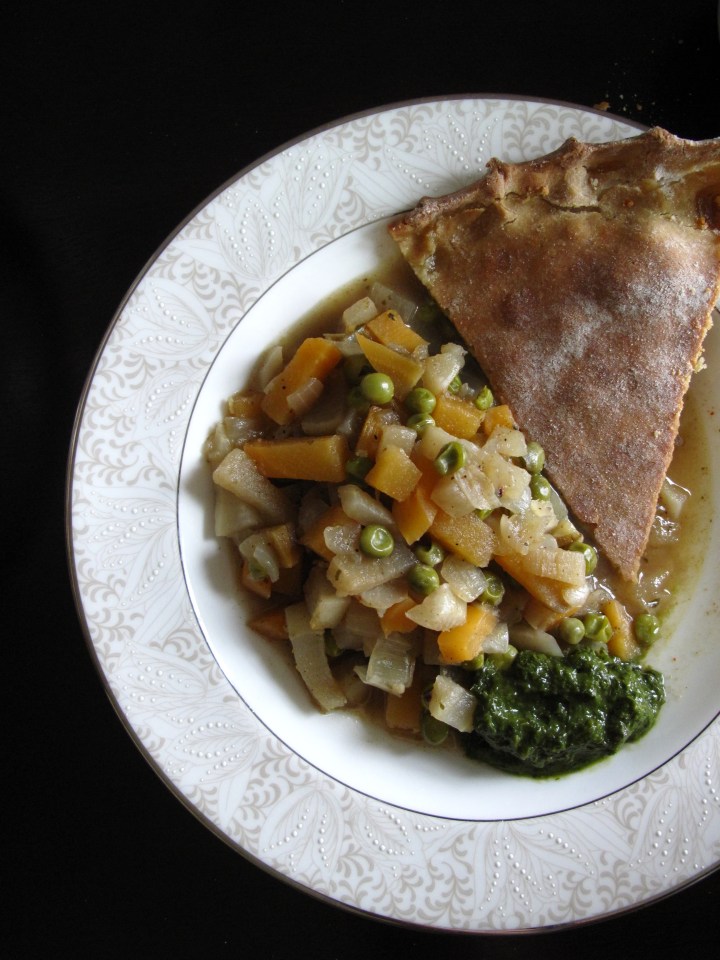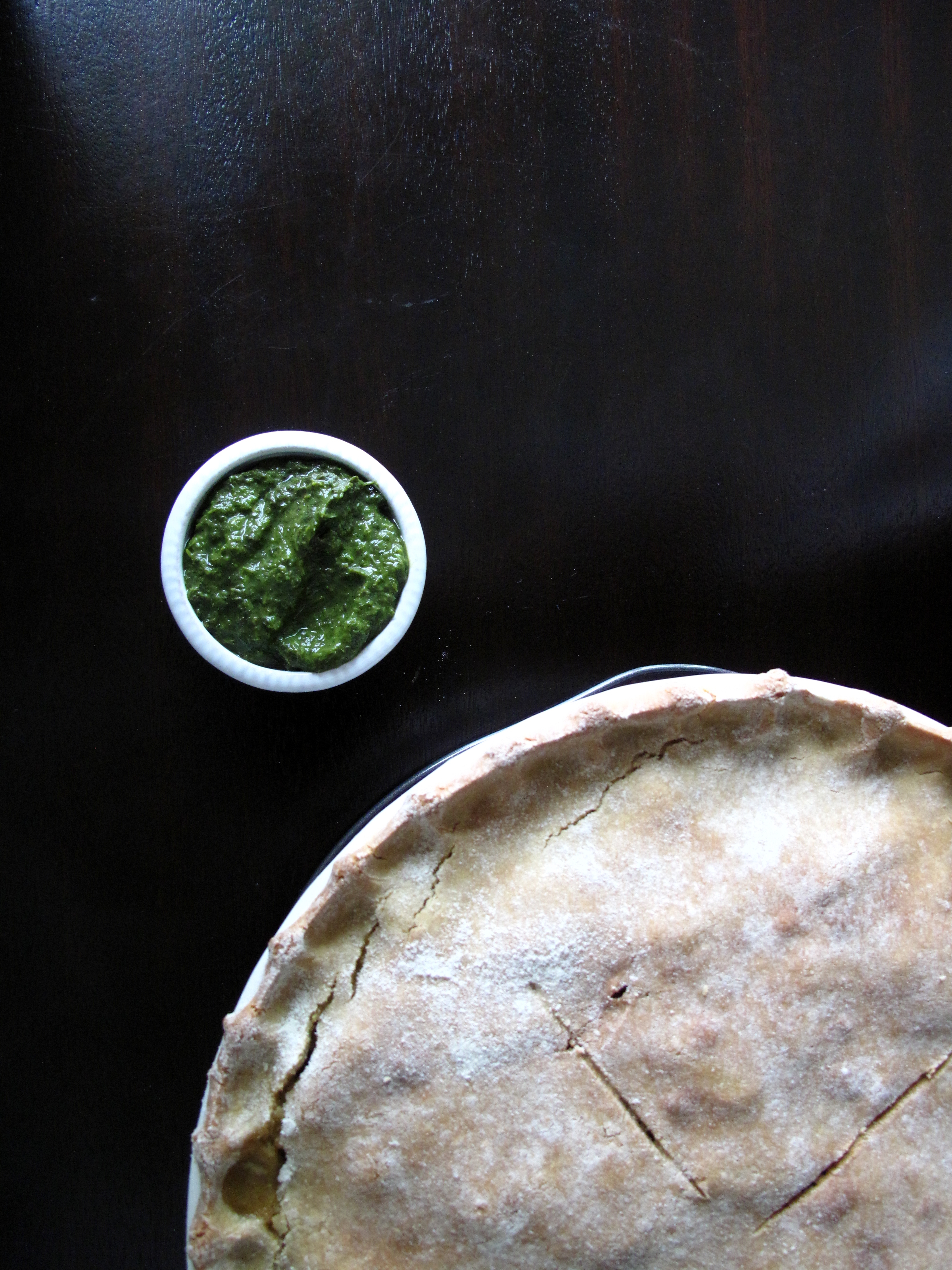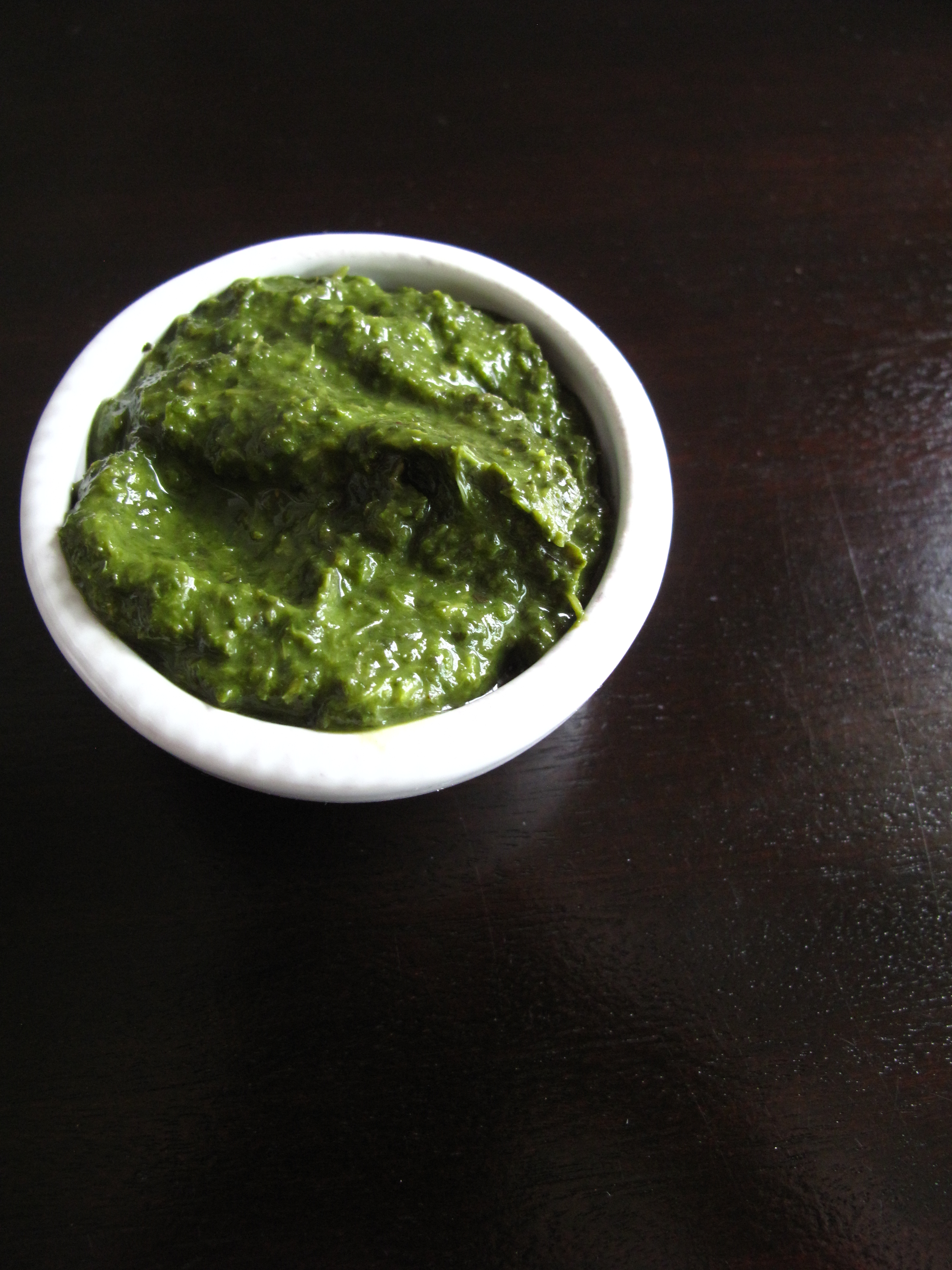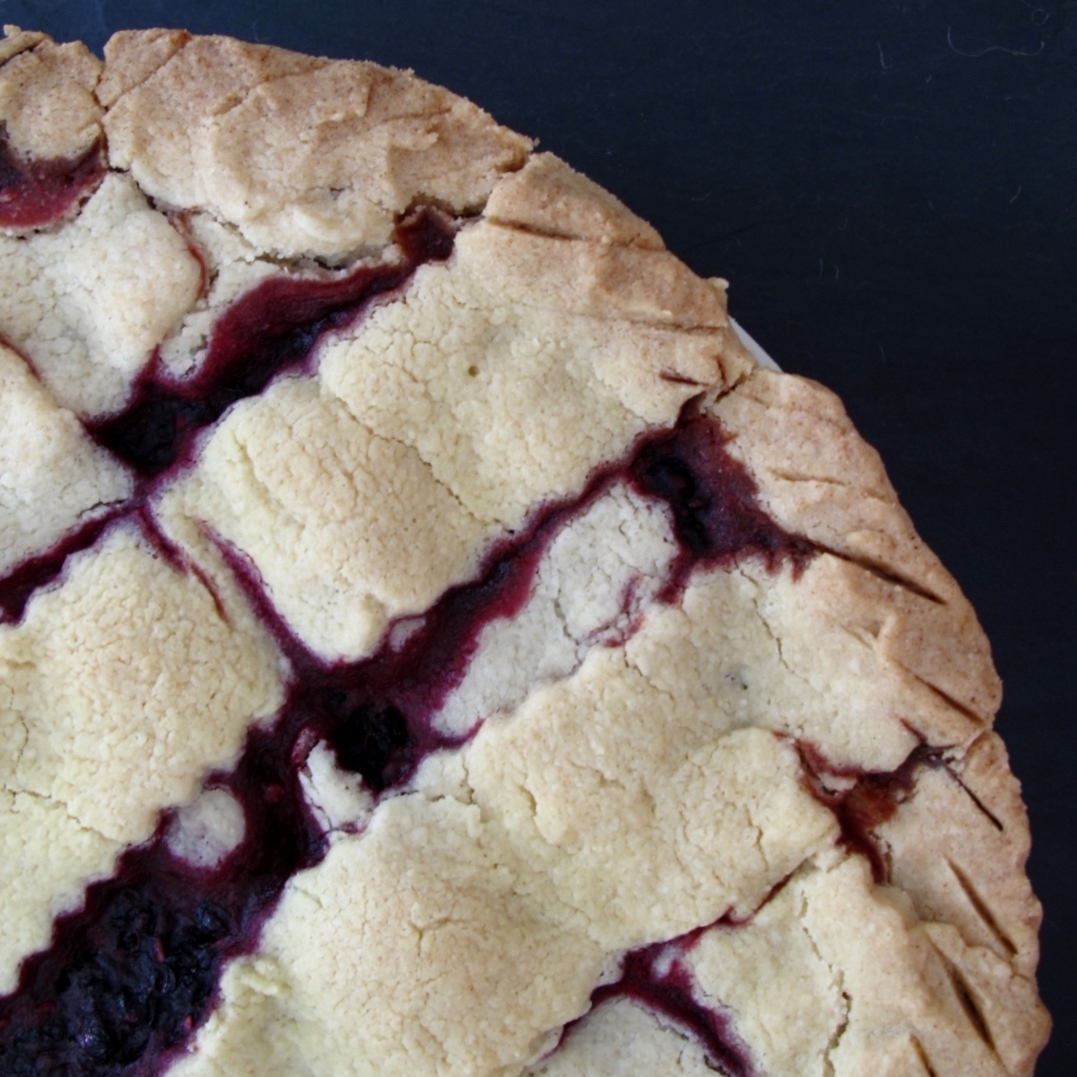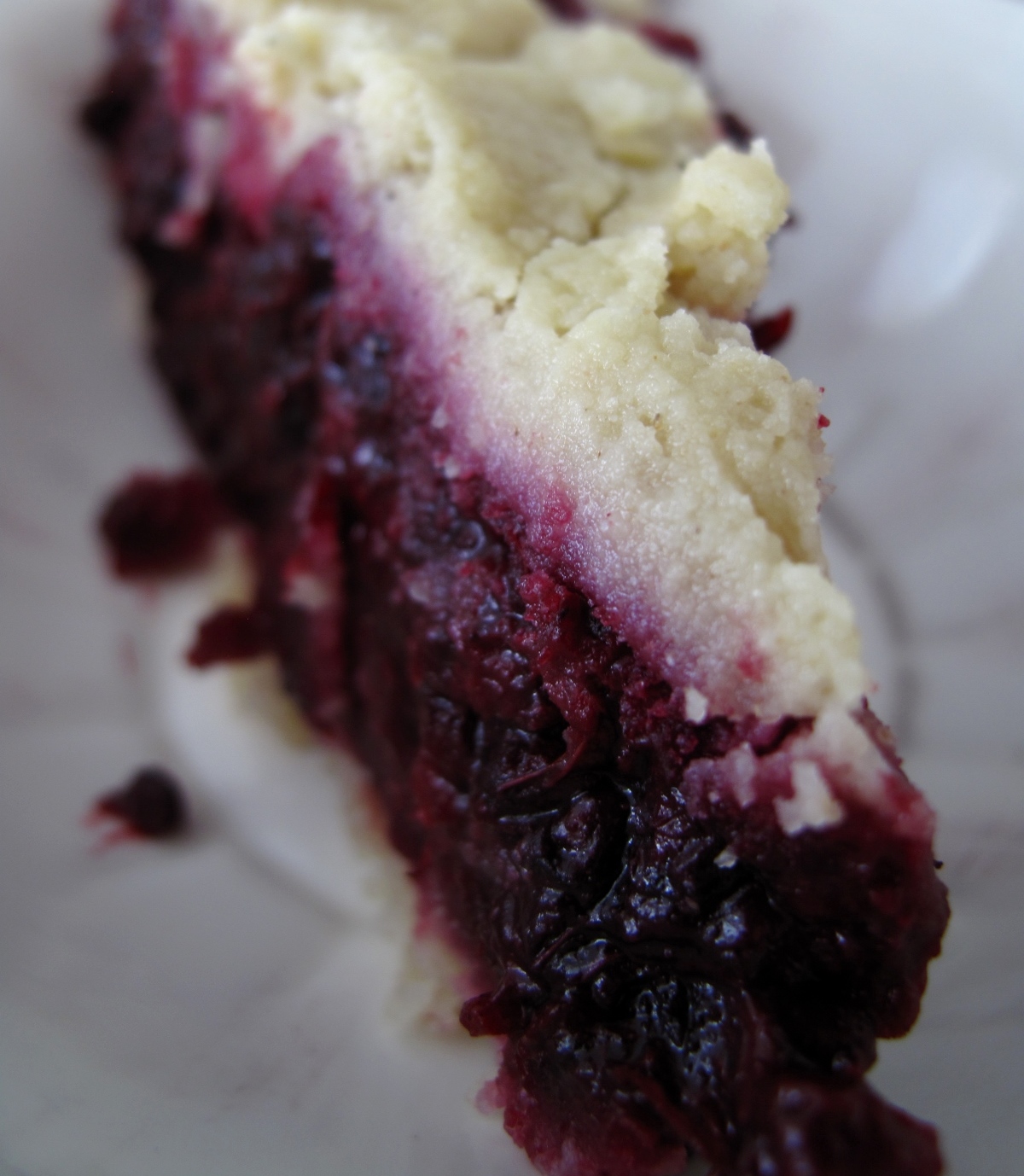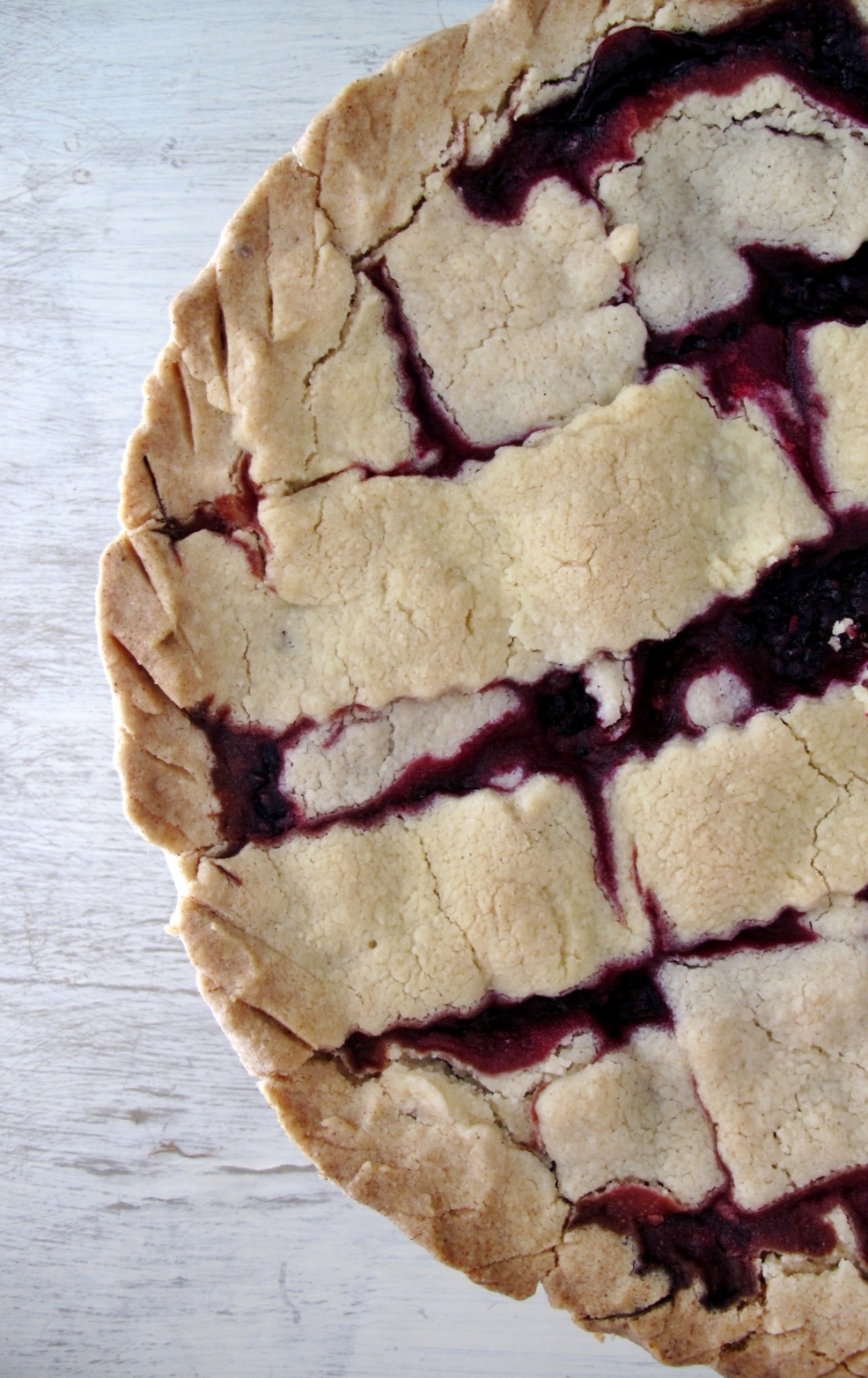
I’ve been making apple pie as long as I can remember, a fall / holiday season staple since at least my early teens.

Still, it’s taken all these years of tinkering with filling and pastries to get the combination just right.

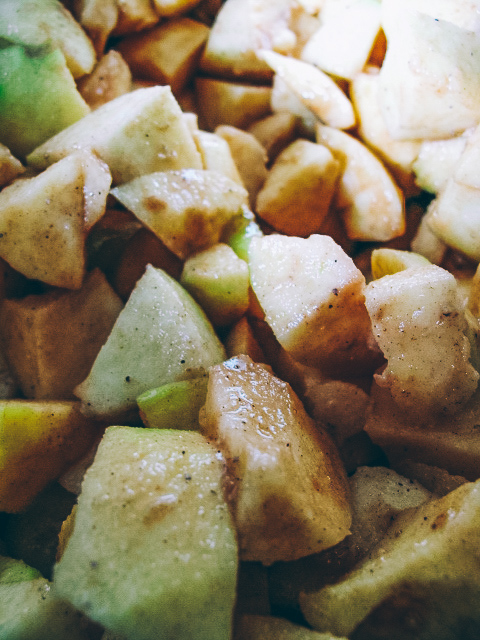
I’m not a pie person, per se. I’d take a really dense and elaborate layer cake, a quick bread / loaf cake, or even a muffin over pie most days. But I do like pie and if you’d ask, I’d take apple pie every single time.
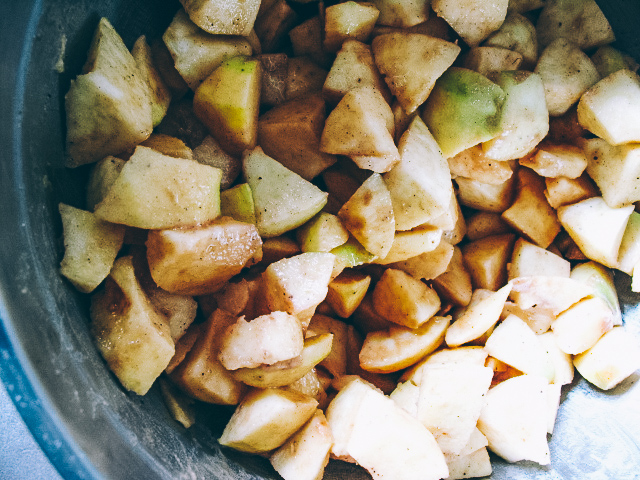
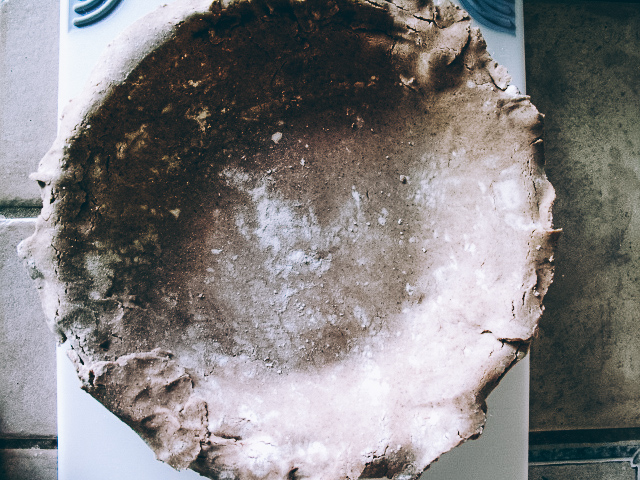
We’re at the point in our outdoors / landscaping overhaul that our apple trees are producing this year. So the timing of getting this pie right is pretty special since a good portion of the apples came from one of the trees, a Goldrush variety.
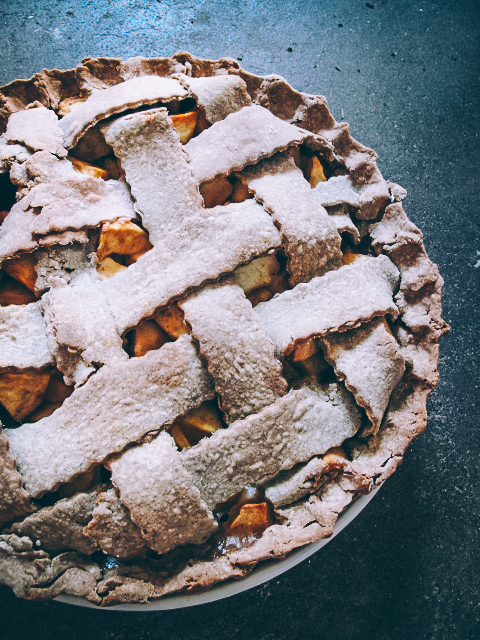
And the pastry, though this version is latticed and rustic, is dreamy to work with, particularly when it comes to being gluten-free. If there’s a downside to it, I’d say it rolls out too well, meaning I can get overly enthusiastic and roll it too thin, knowing I can pick it up and transfer it easily with no breaking or falling apart.
And, after several years of tweaking and testing it out on all sorts of folks that don’t have to avoid gluten or dairy (or any other foods), I can say it meets with approval, and often is favored over the other pastries during the holidays because the flour blend makes for a little more nuanced flavor profile that plain white wheat flour will never have.
Enjoy this one. Fill it with the best and most local apples of the season, or whatever filling you most prefer.
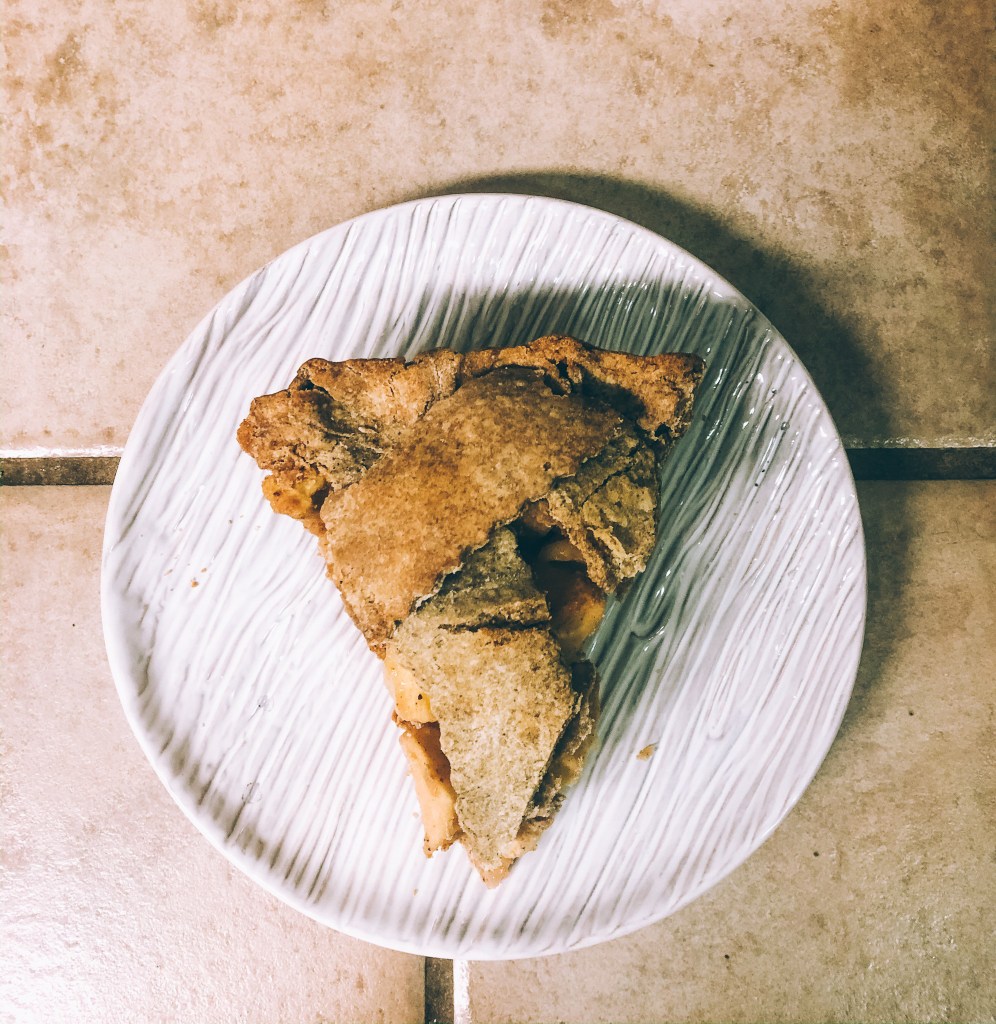
Apple Pie, makes a 9″ pie with double crust
– The key to a good apple pie is to use a mixture of at least two different apple varieties, one slightly softer, and one that’s more crisp. I used Goldrush and an unnamed “pie apple” from a local farm and it was delicious.
– For the pastry recipe, I’ve listed the preferred flours first, and another option second, depending on availability. It’s important to use a mixture of flours to get the right flavor and texture and many trial versions has lead me to this particular combination and ratio.
– For a non-dairy butter, I like Miyoko’s European Style Vegan Butter most. It has the right texture, flavor, and is simple on the ingredient list. If you can tolerate dairy, a nice quality unsalted butter is also a preferred option.
3 pounds assorted apples (about 6-8 cups sliced), peeled and sliced
2 Tbs. fresh lemon juice
2 Tbs. coconut sugar
2 Tbs. maple syrup
2 tsp. arrowroot starch
3 Tbs. sorghum flour
½ tsp. cinnamon
½ tsp. cardamom
1/8 tsp. salt
- Preheat oven to 400 degrees F.
- Remove the dough from the fridge, unwrap, and place on a lightly floured surface. Roll out the dough into a 12″ circle, dusting the dough lightly with flour as needed, rotating and flipping it to prevent it from sticking. Ease the dough into a 9″ pie pan, fit it into the corners, and trim it to a 1″ overhang.
- In a large bowl, toss together apples, lemon juice, sugar, maple syrup, spices, and flour.
- Turn the apple mixture into the pie pan.
- Roll out the top crust and add atop, making a lattice crust if desired. Fold the overhang of the crust under, and flute the crust by pressing it between the thumb of one hand and the index finger and thumb of the other hand. Freeze it for 20 minutes, then remove and put in the preheated oven to bake.
- Bake for 20 minutes at 400 degrees, until the crust begins to turn a golden brown. Then reduce the oven temperature to 350 degrees and bake until browned on top and the juices are bubbling in the center, about 60 to 70 minutes.
- Let cool completely on a wire rack before slicing and serving.
Gluten + Dairy-Free Pie Pastry, makes a double crust pastry
160 grams / 1 cup brown rice or teff flour
70 grams / ½ cup sorghum flour
70 grams / ½ cup buckwheat or millet flour
60 grams / ½ cup arrowroot starch
30 grams / 3 Tbs. tapioca starch
30 grams / 5 Tbs. finely ground chia seed
1 1/2 Tbs. coconut sugar
1/2 tsp. sea salt
230 grams/ 16 Tbs. cold, unsalted vegan butter, sliced ¼” thick
12-16 Tbs. ice water
2 tsp. apple cider vinegar
- In a large bowl, combine the flours, ground chia seed, sugar, and salt. Scatter the butter pieces on the top, and work in with your fingers until the mixture resembles gravel, with lots of butter chunks the size of large peas.
- Stir together 12 tablespoons of the ice water with the apple cider vinegar, and drizzle the mixture into the flour mixture 1 tablespoon at a time, tossing the dough with a rubber spatula to moisten evenly. Add just enough water for the dough to hold together when you give it a squeeze, and add it directly to the dry floury bits that like to hang out on the bottom of the bowl; you may need 12 tablespoons or more of water.
- On a lightly floured surface, roll the chilled dough out into a rough square that is about ¼” thick. Fold it in thirds like you’re folding a letter, then roll up from a skinny end into a loose spiral. Gently press to flatten it slightly, and chill for 30 minutes before rolling out. This folding, rolling and chilling technique will yield a flaky, delicious pastry.

